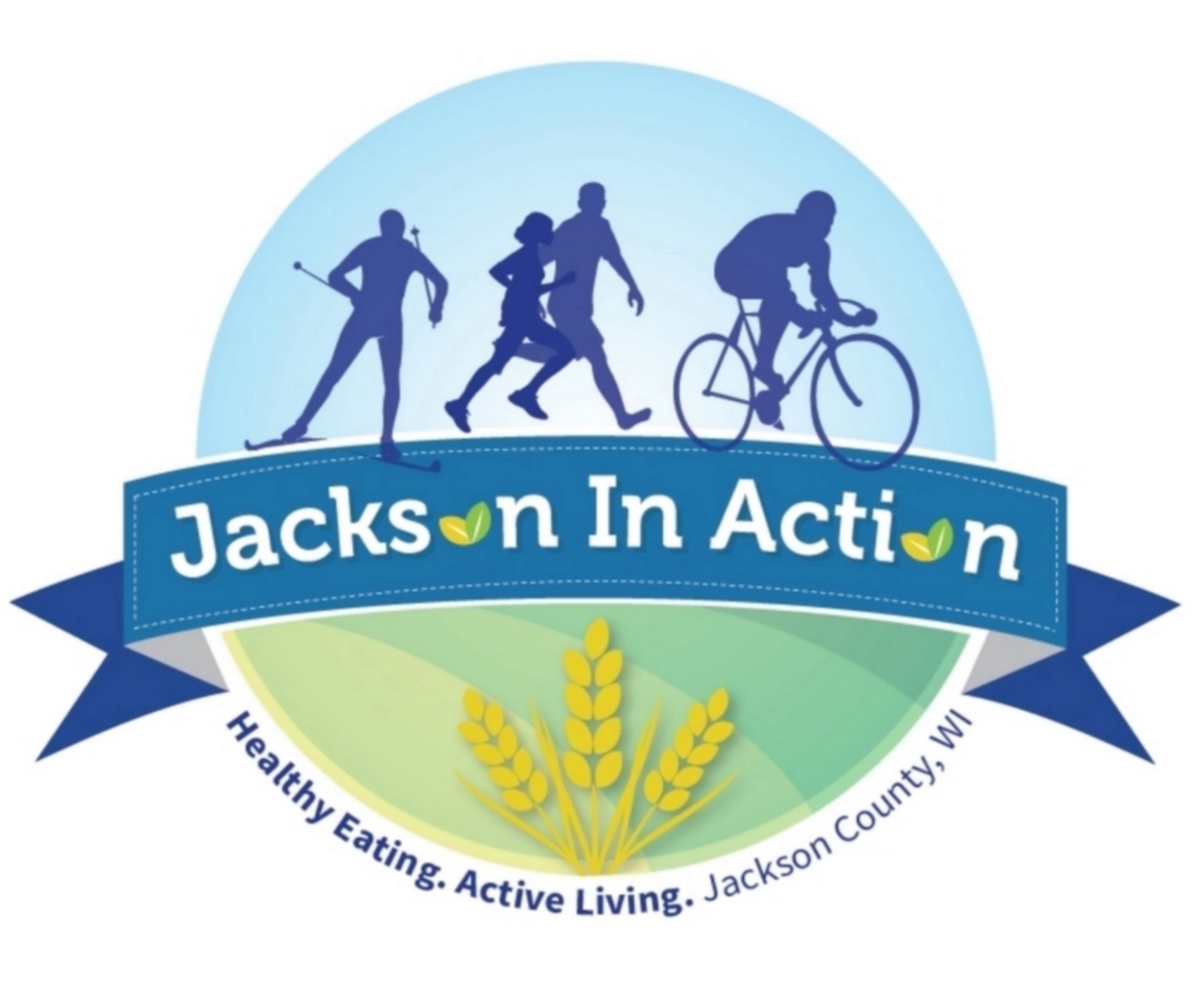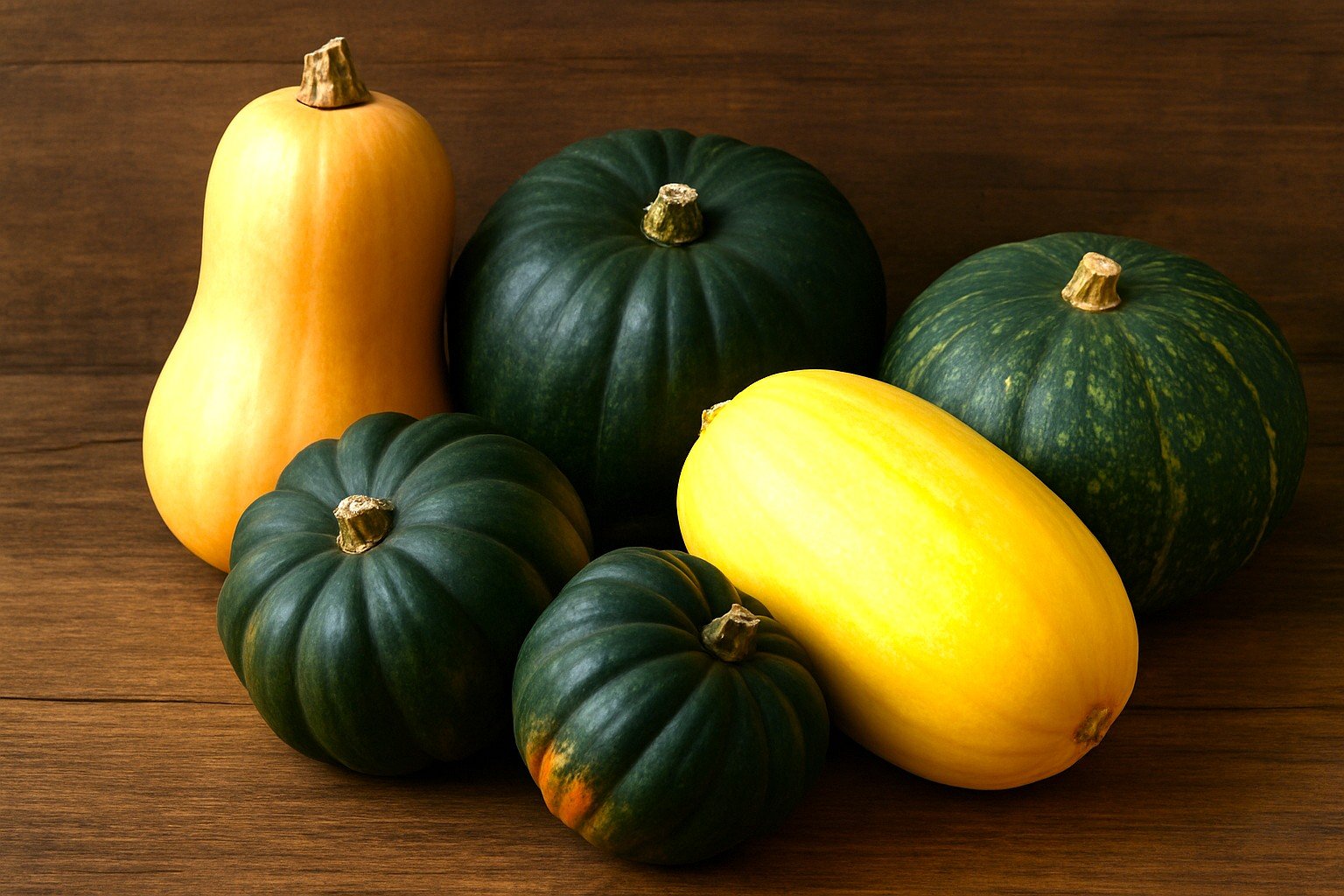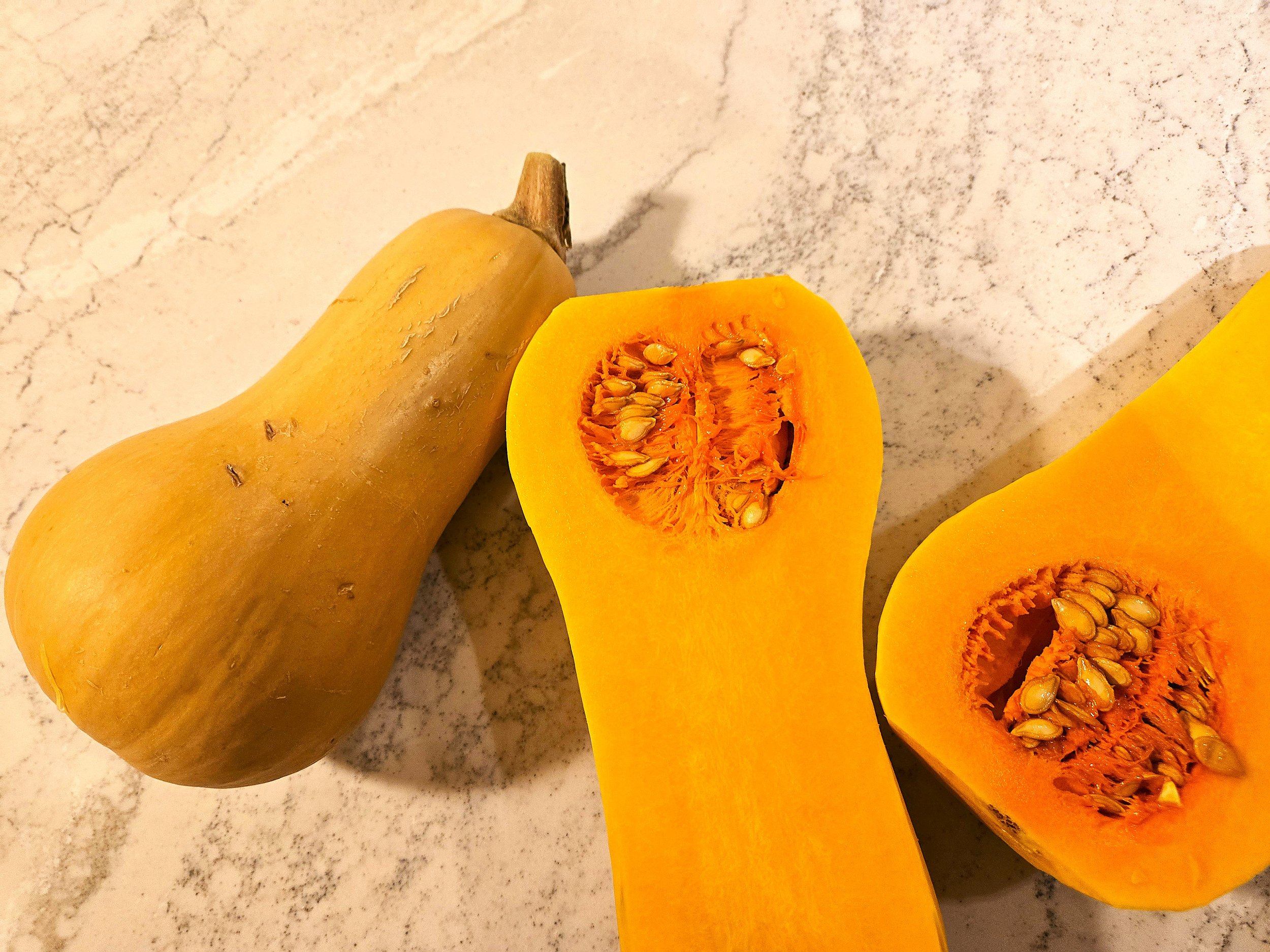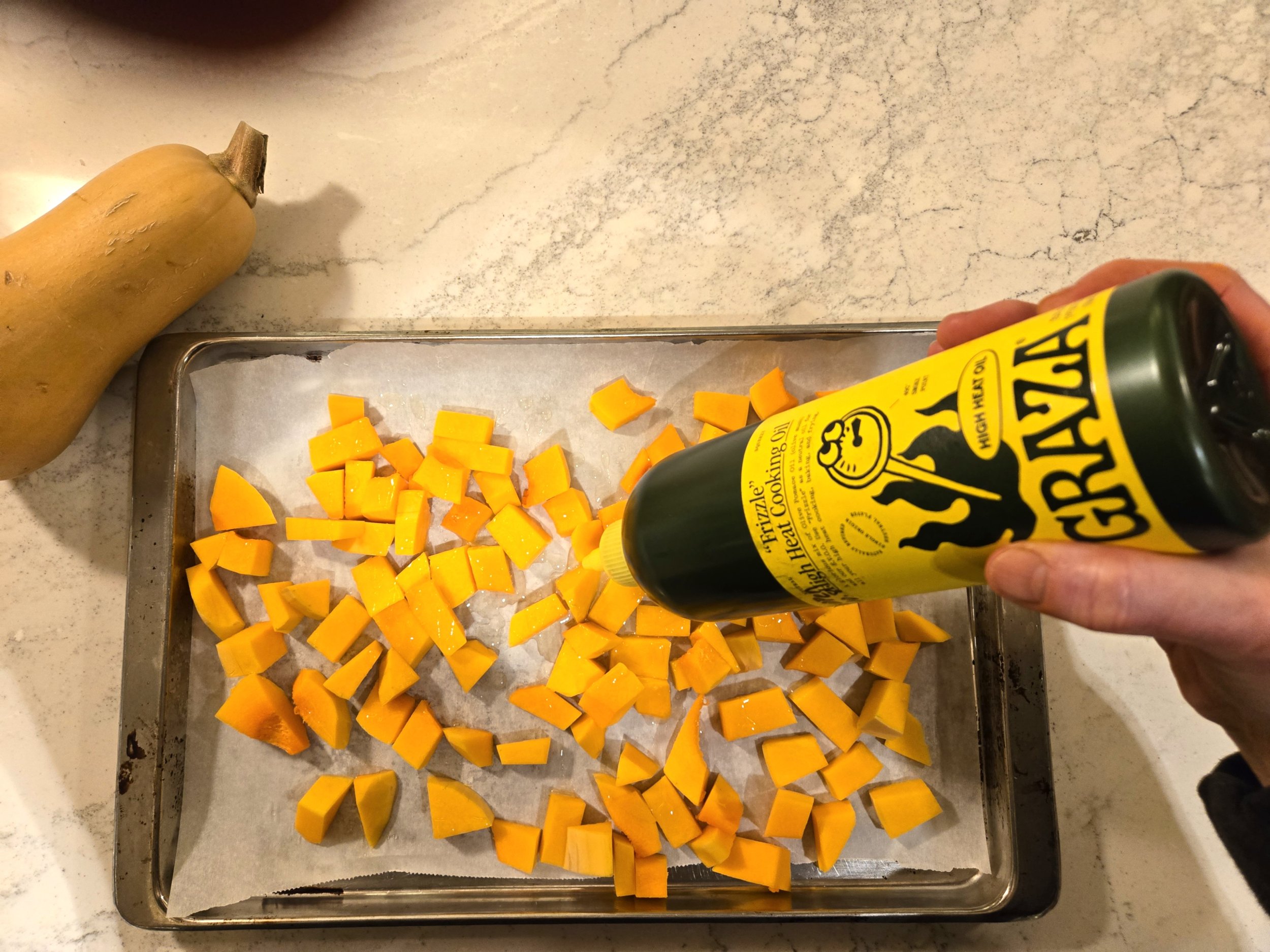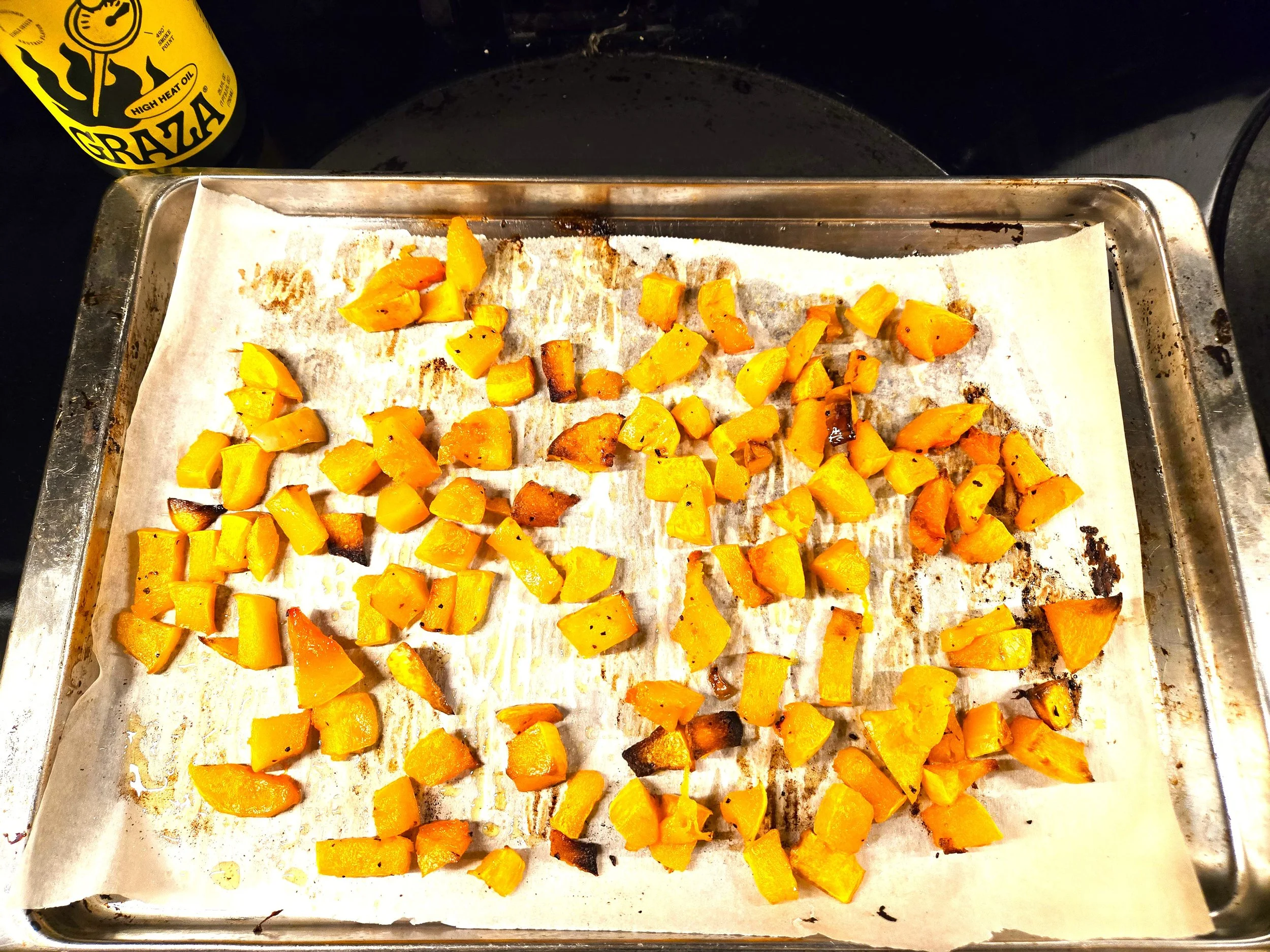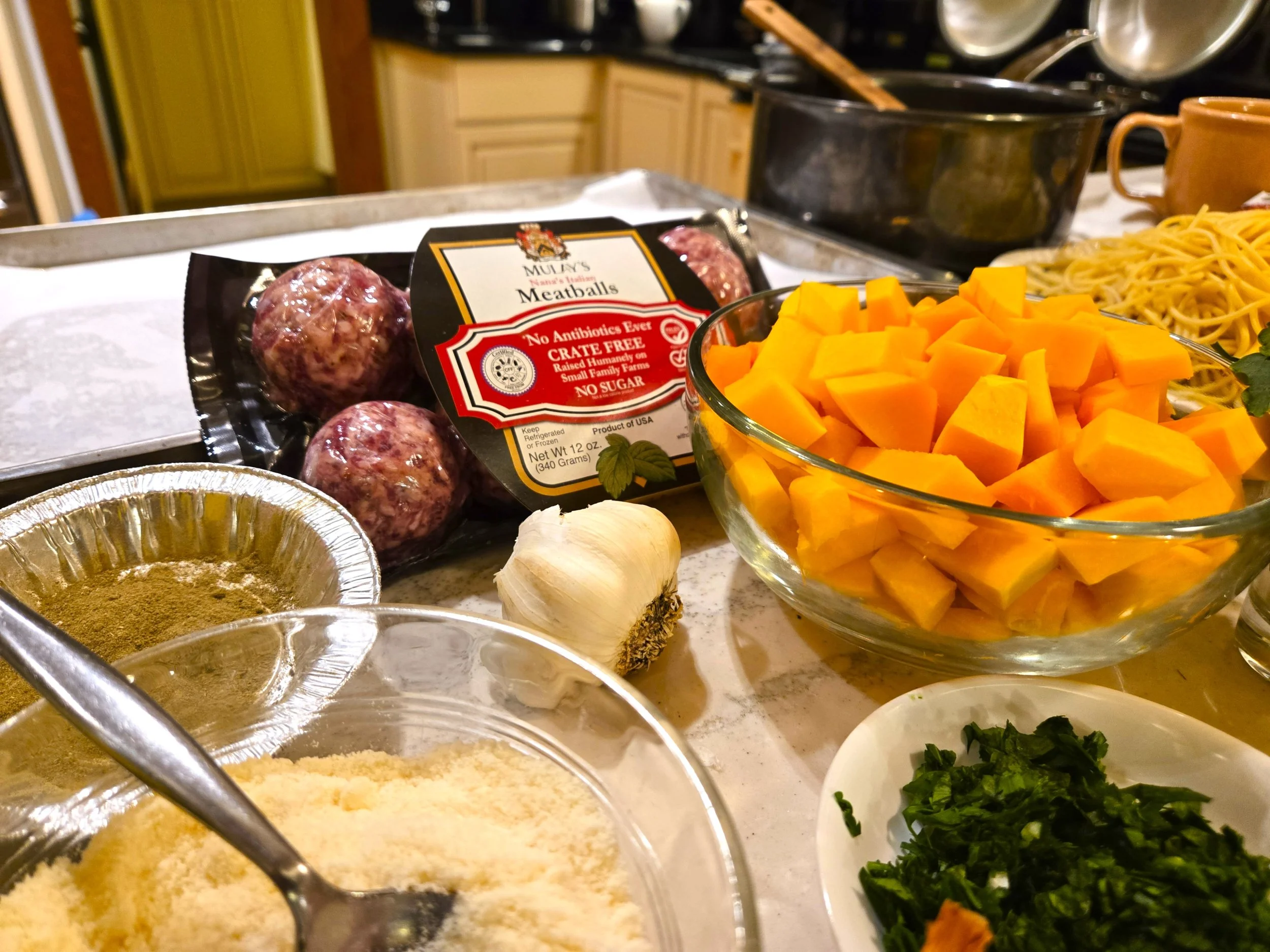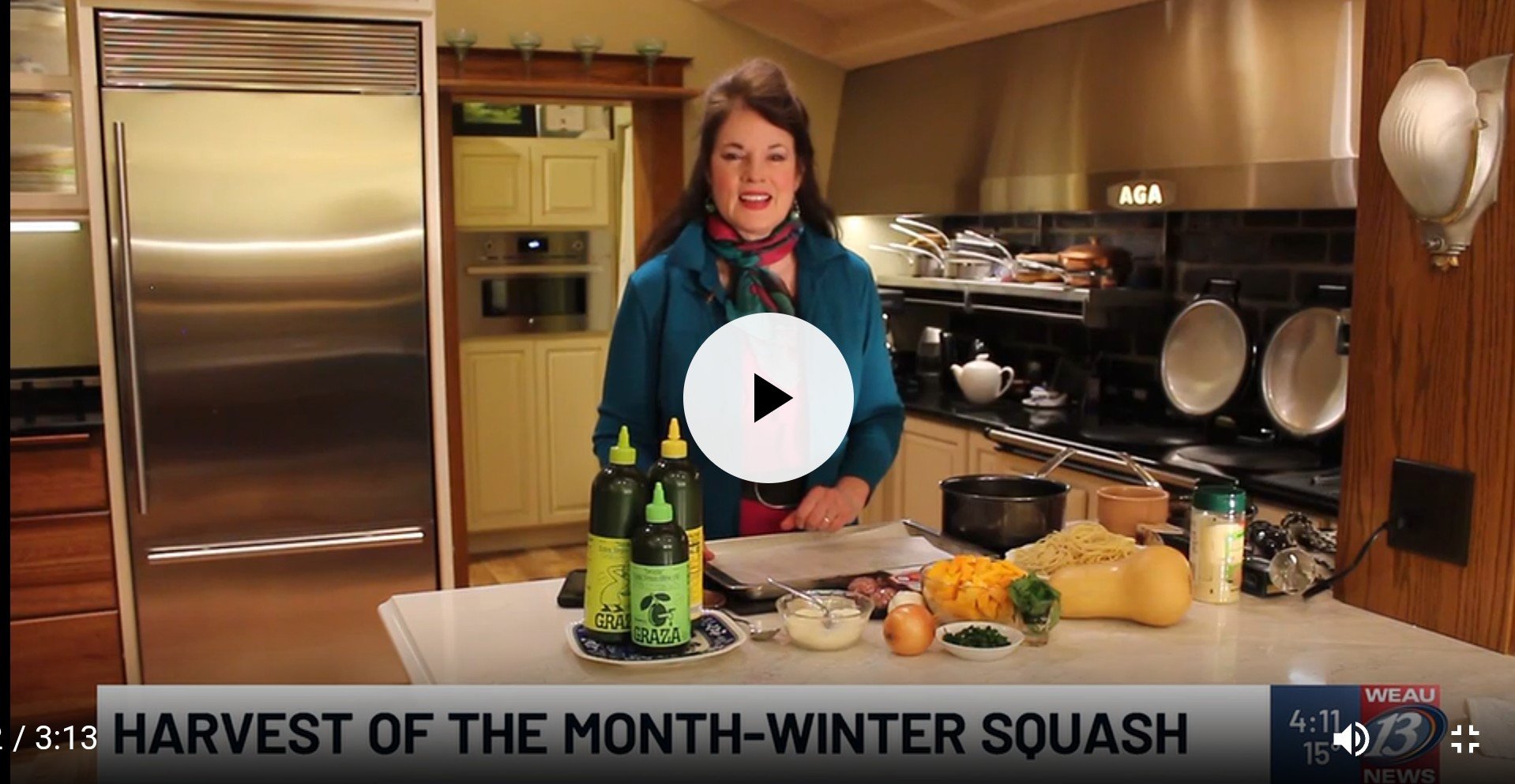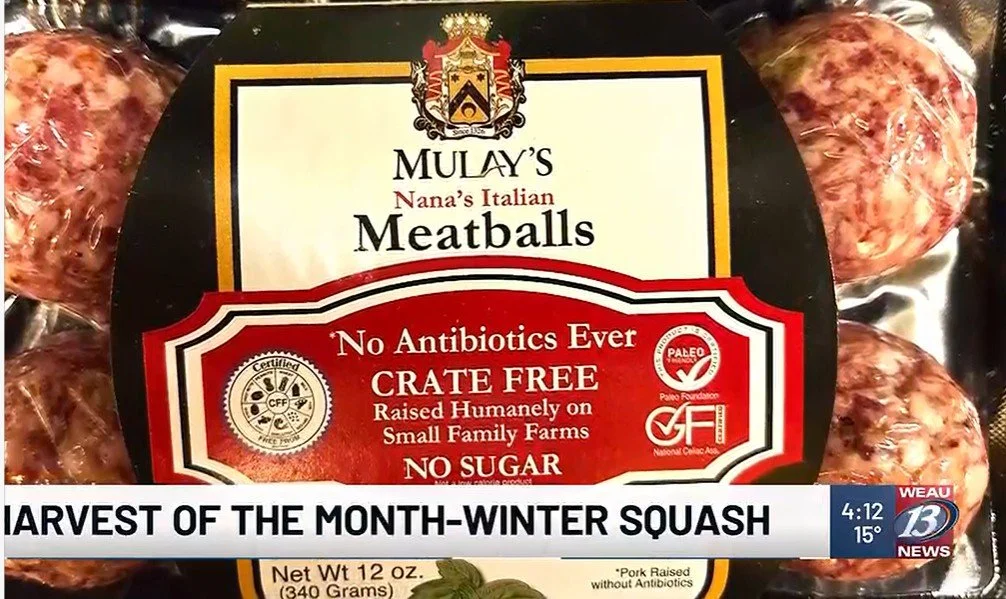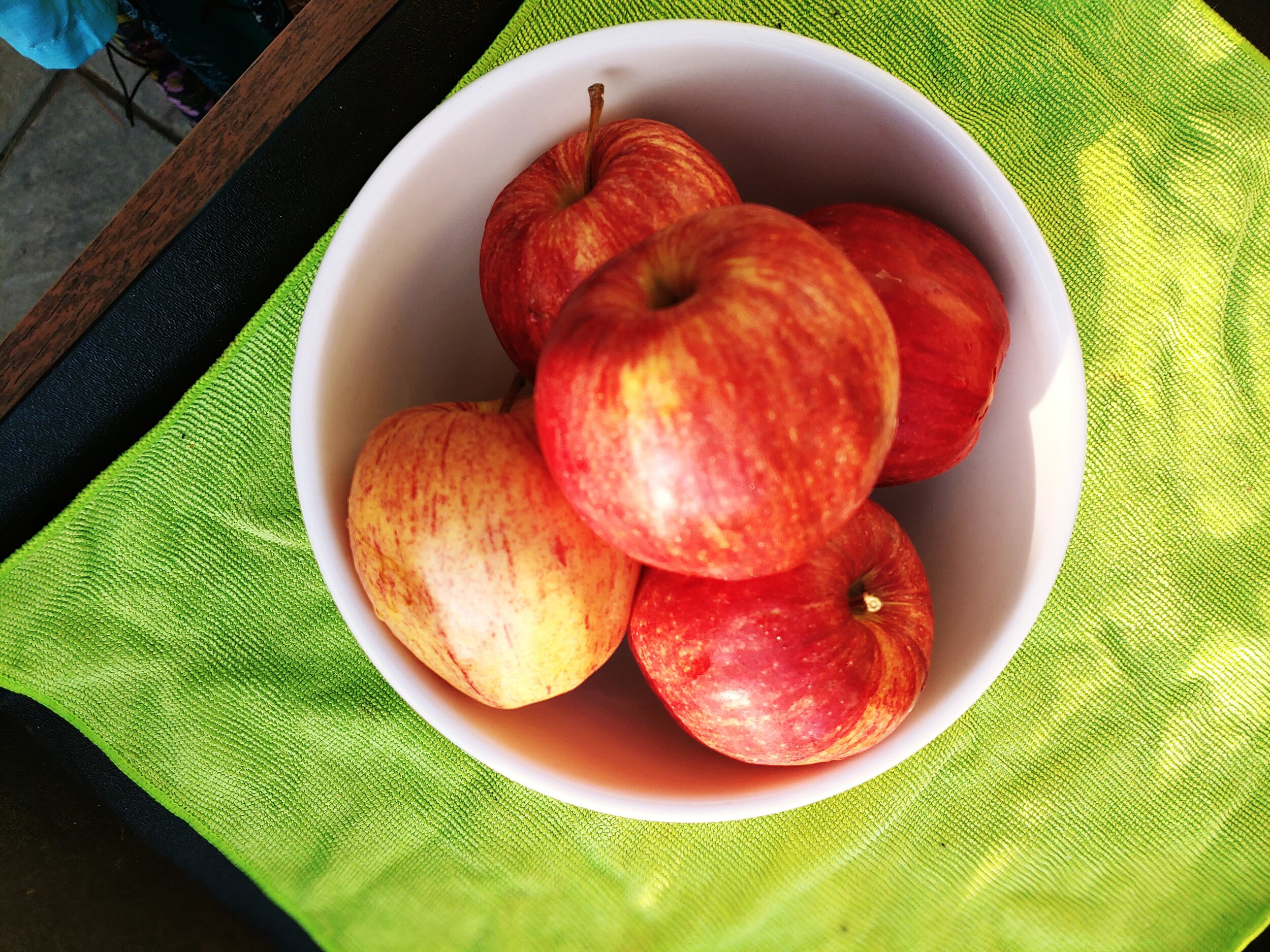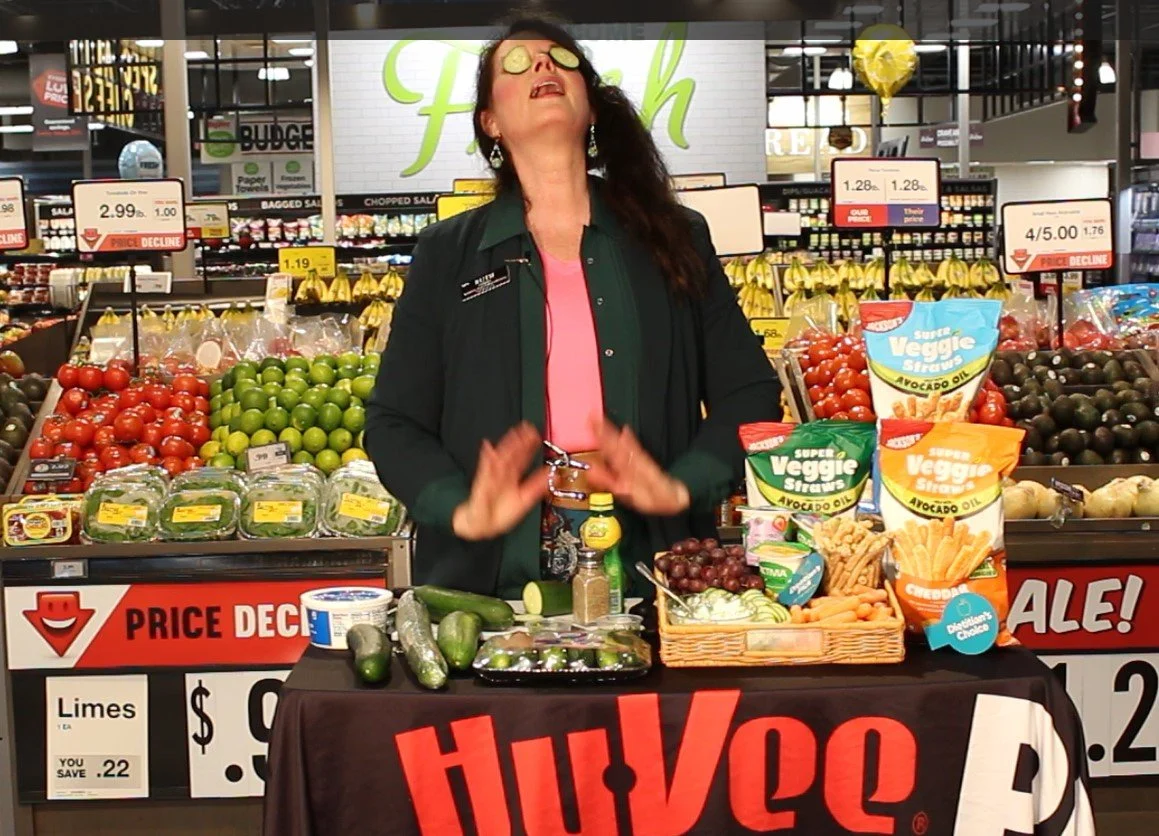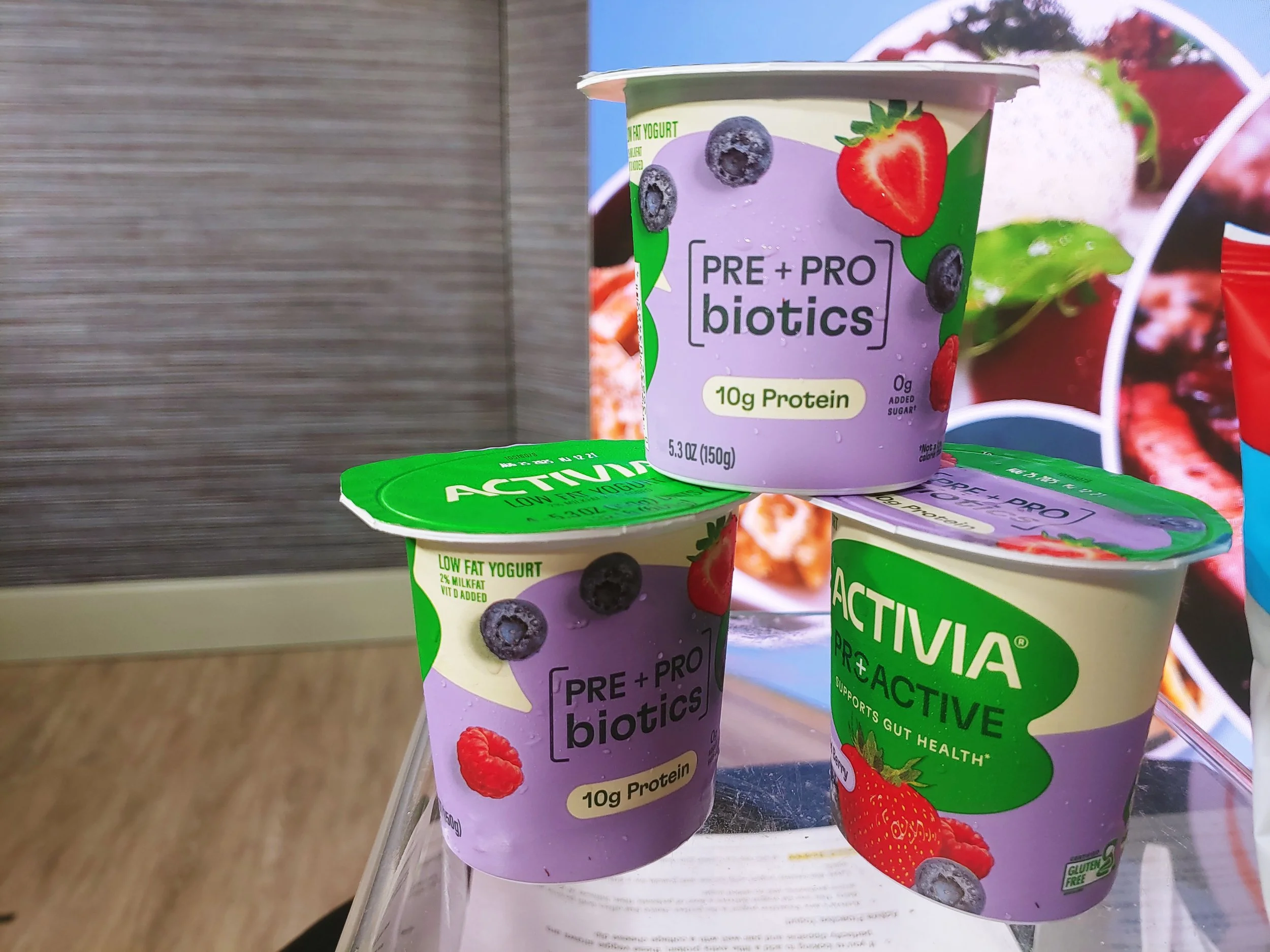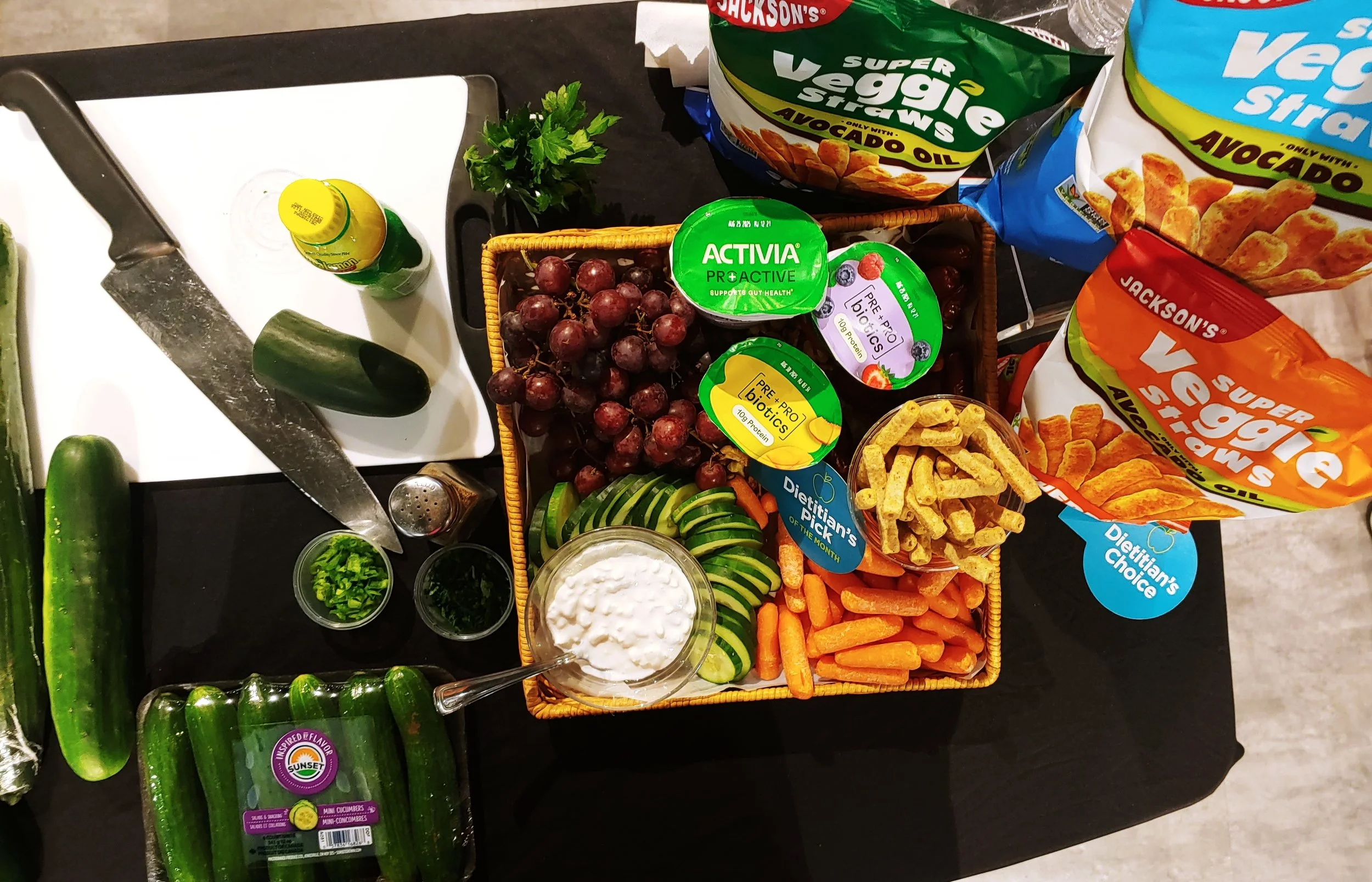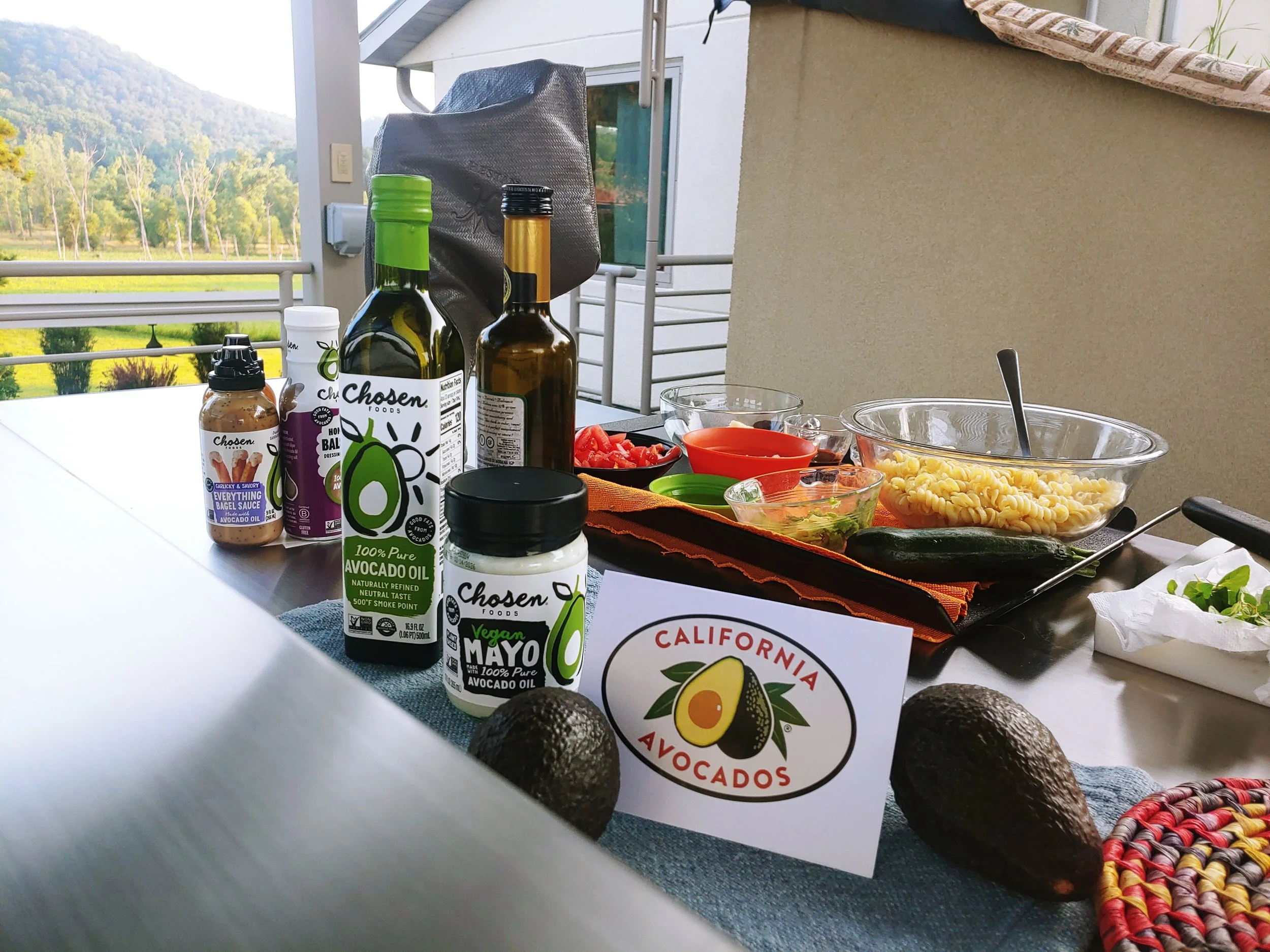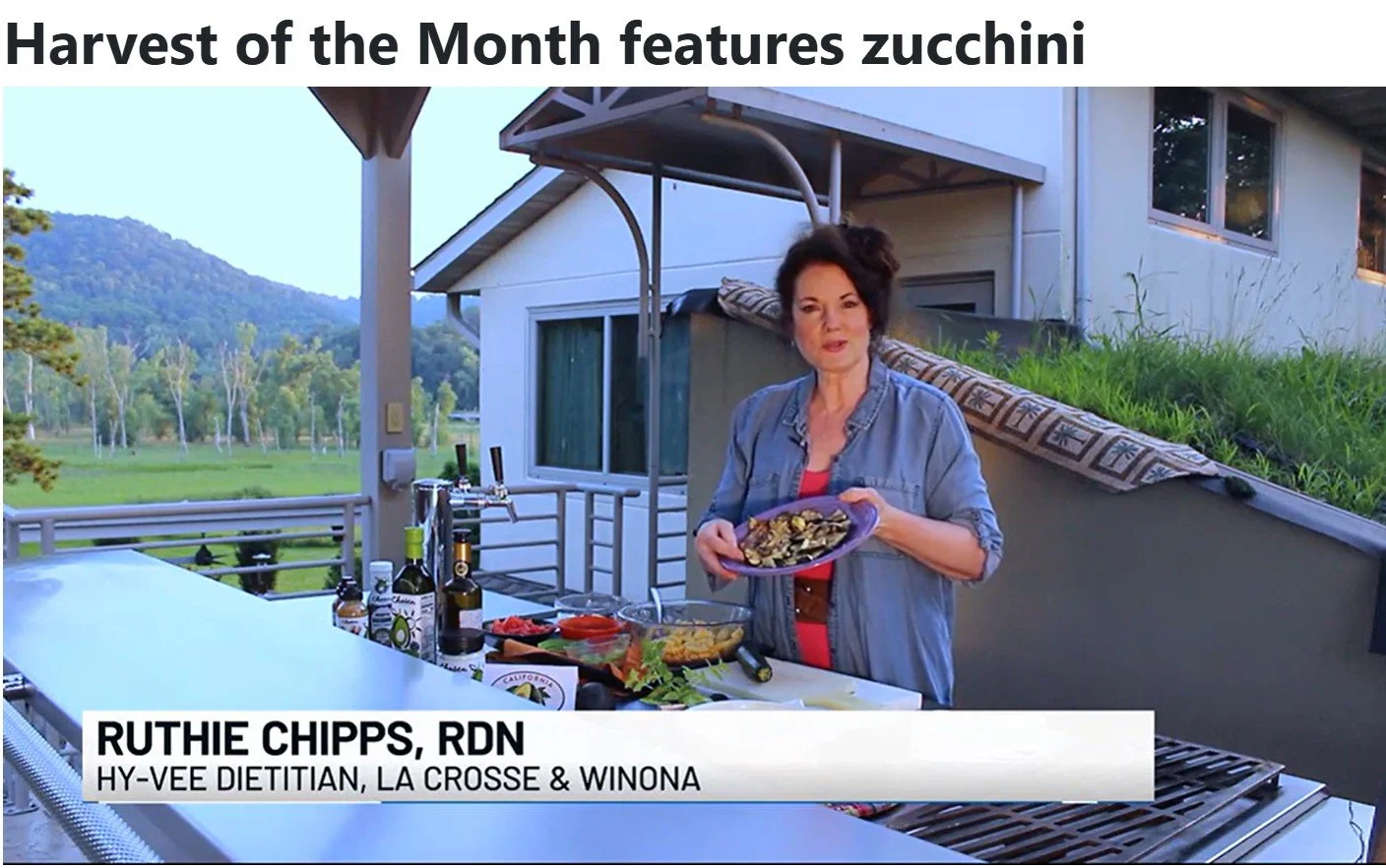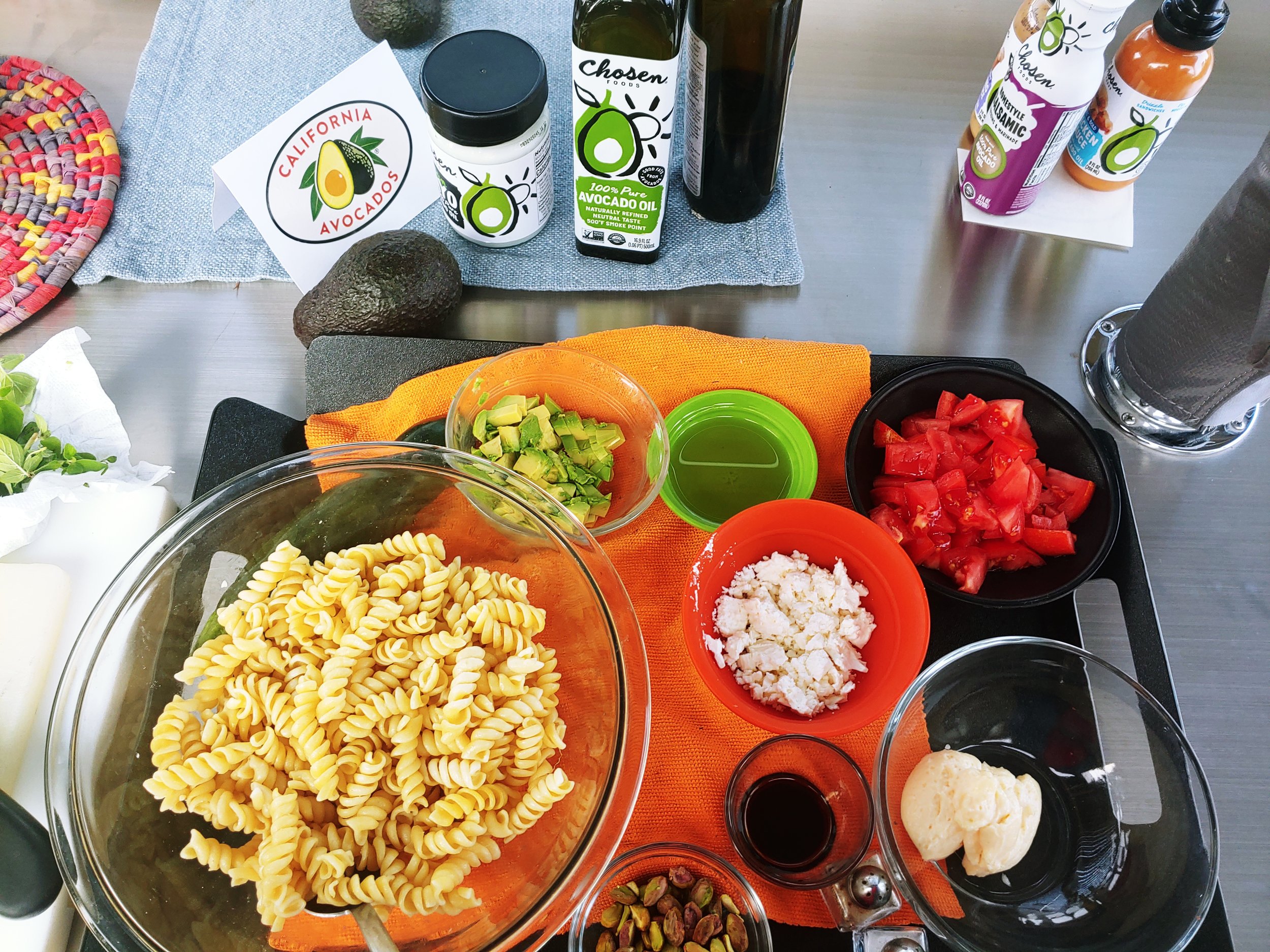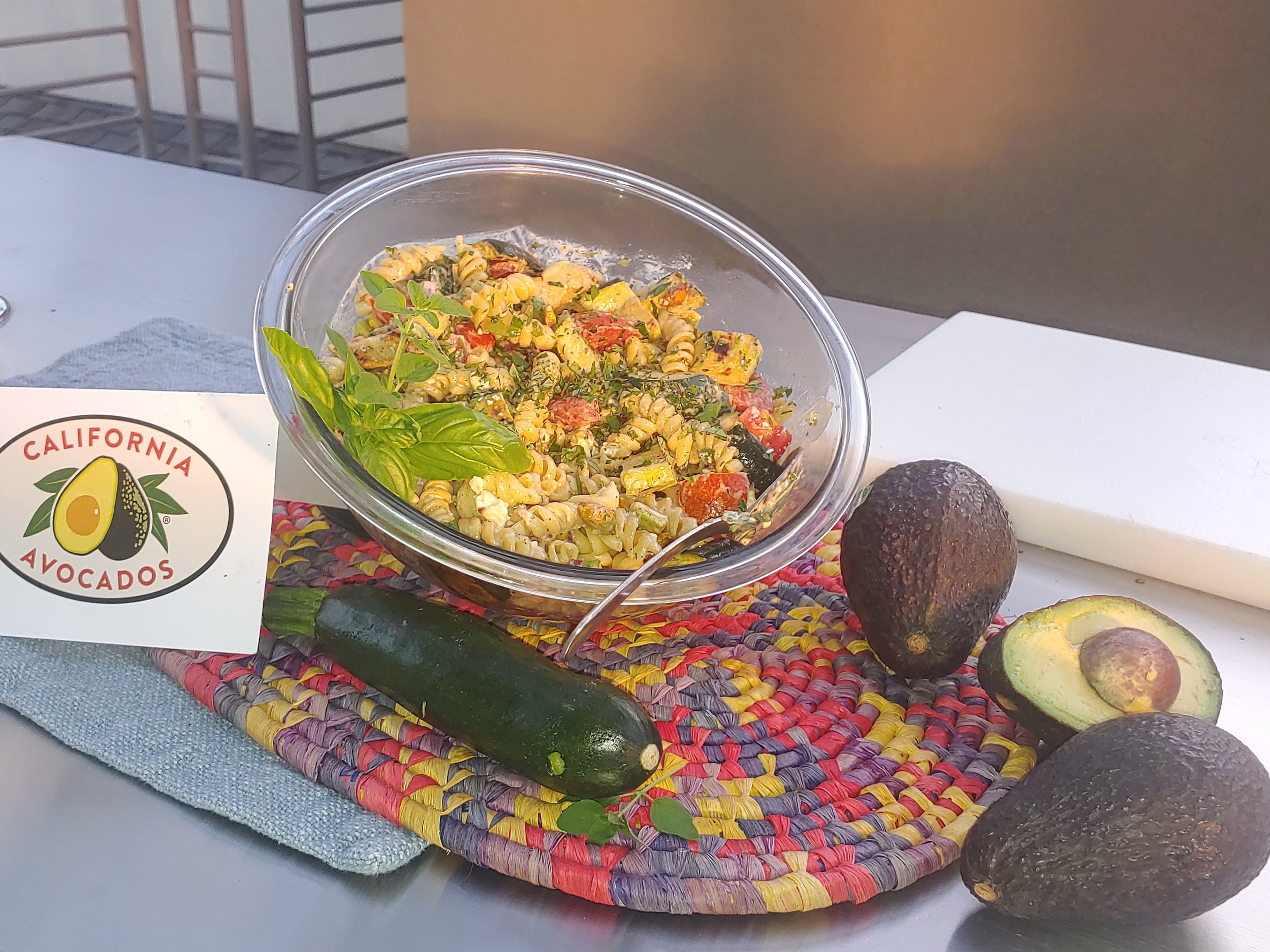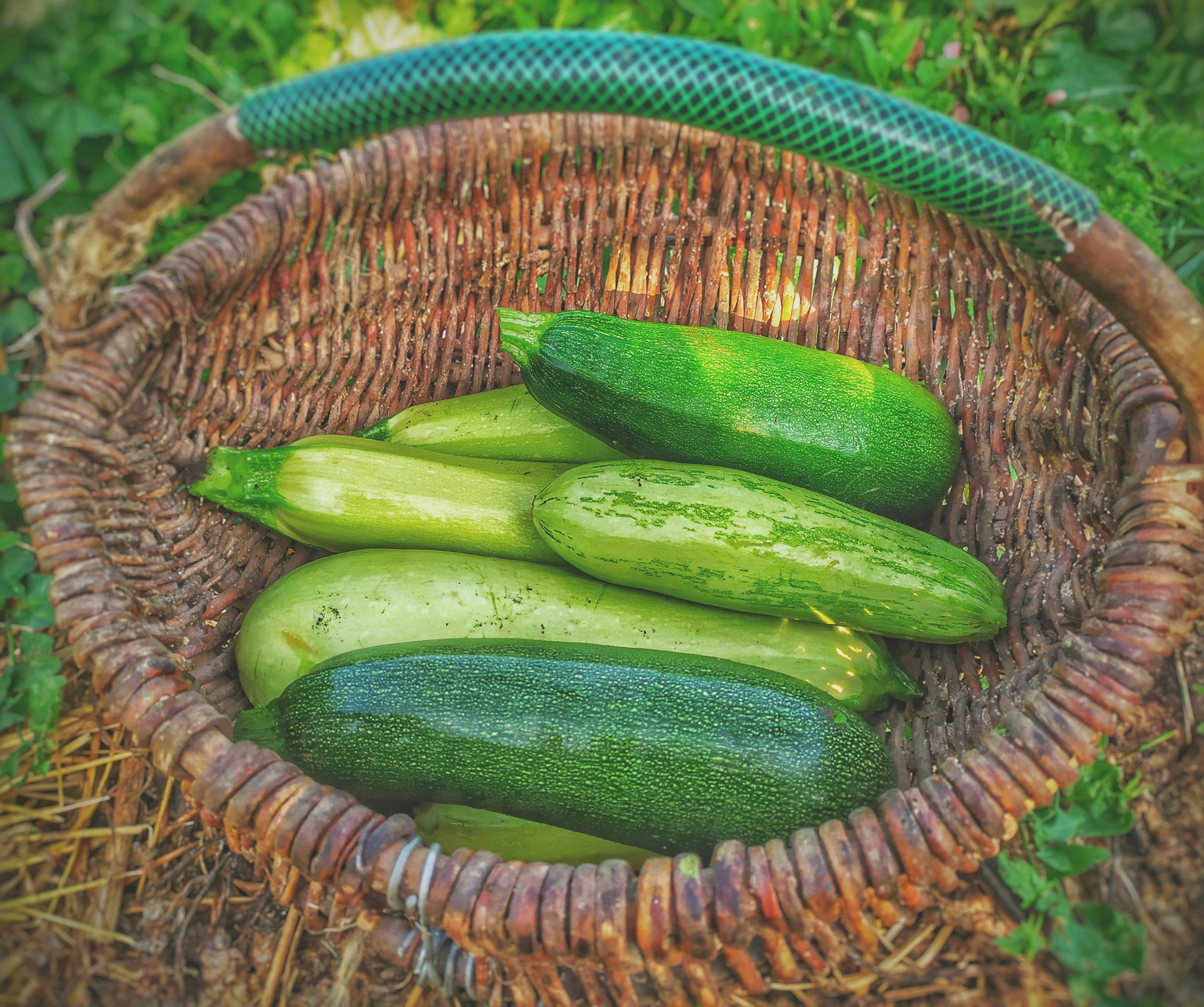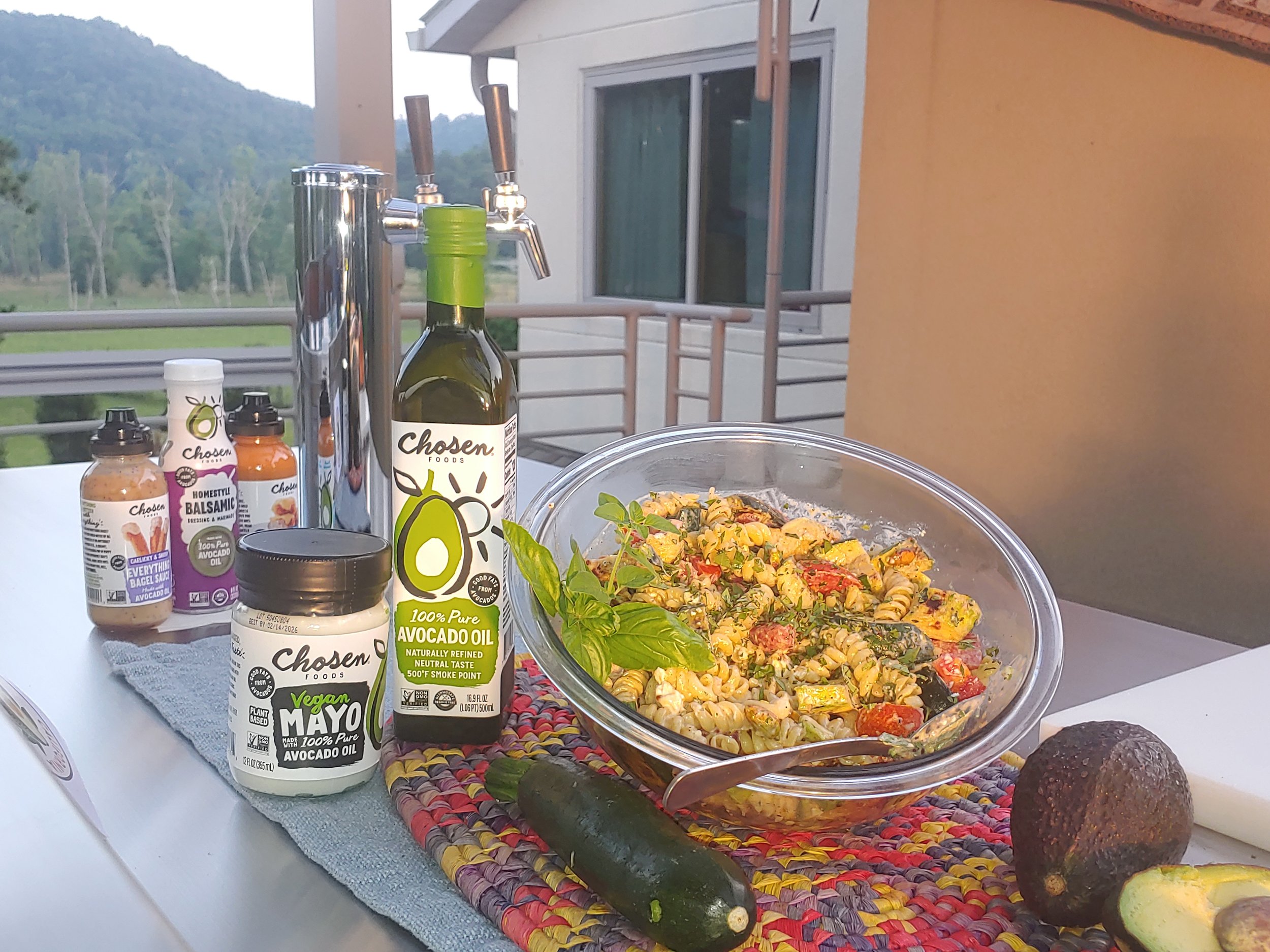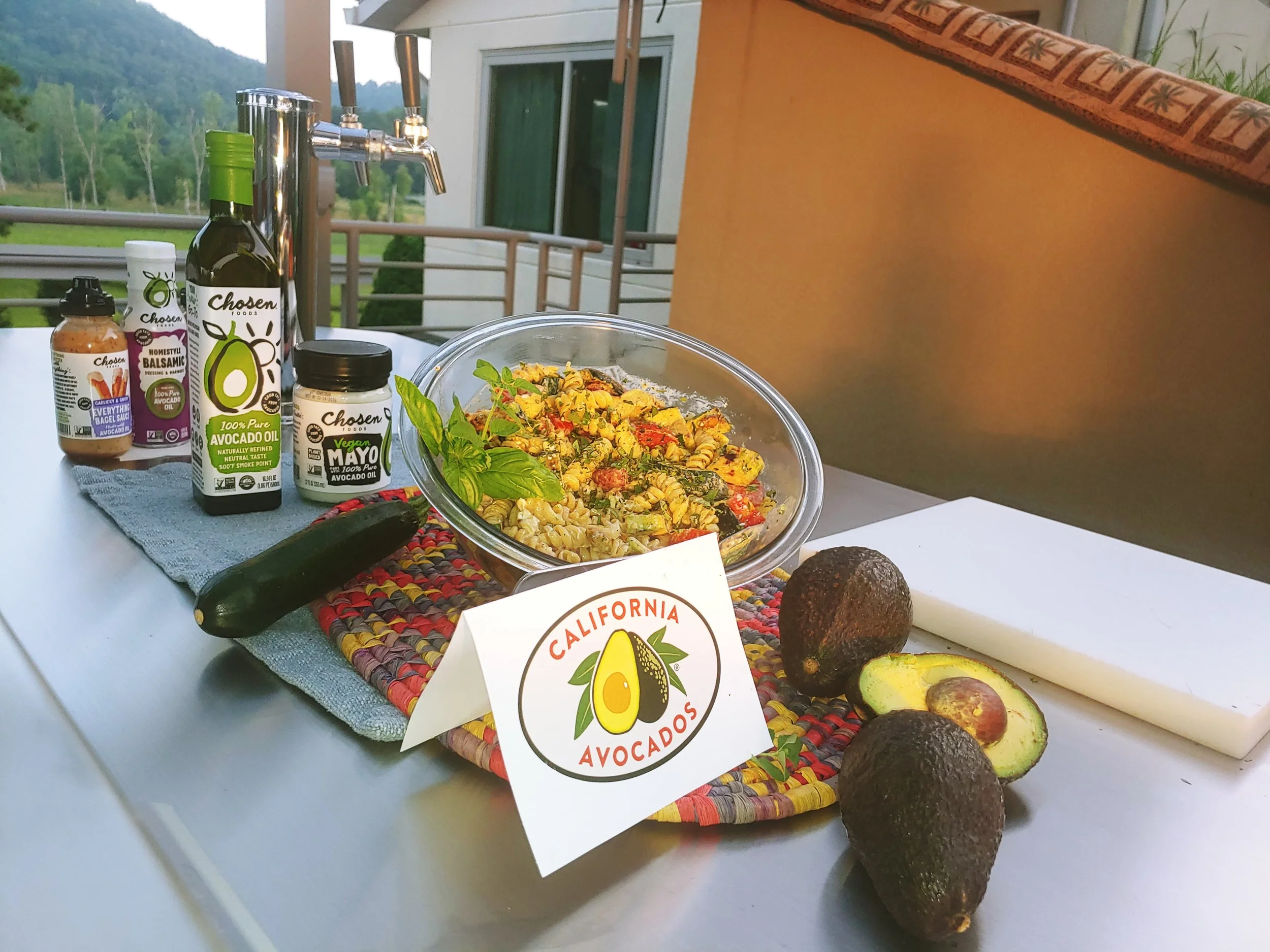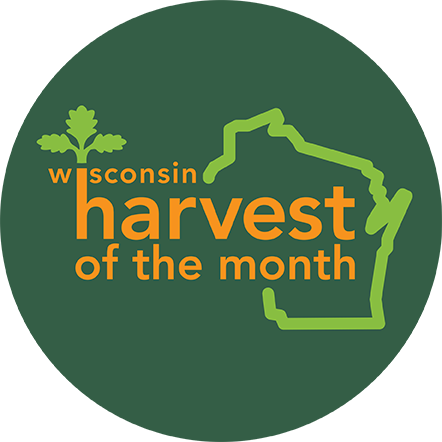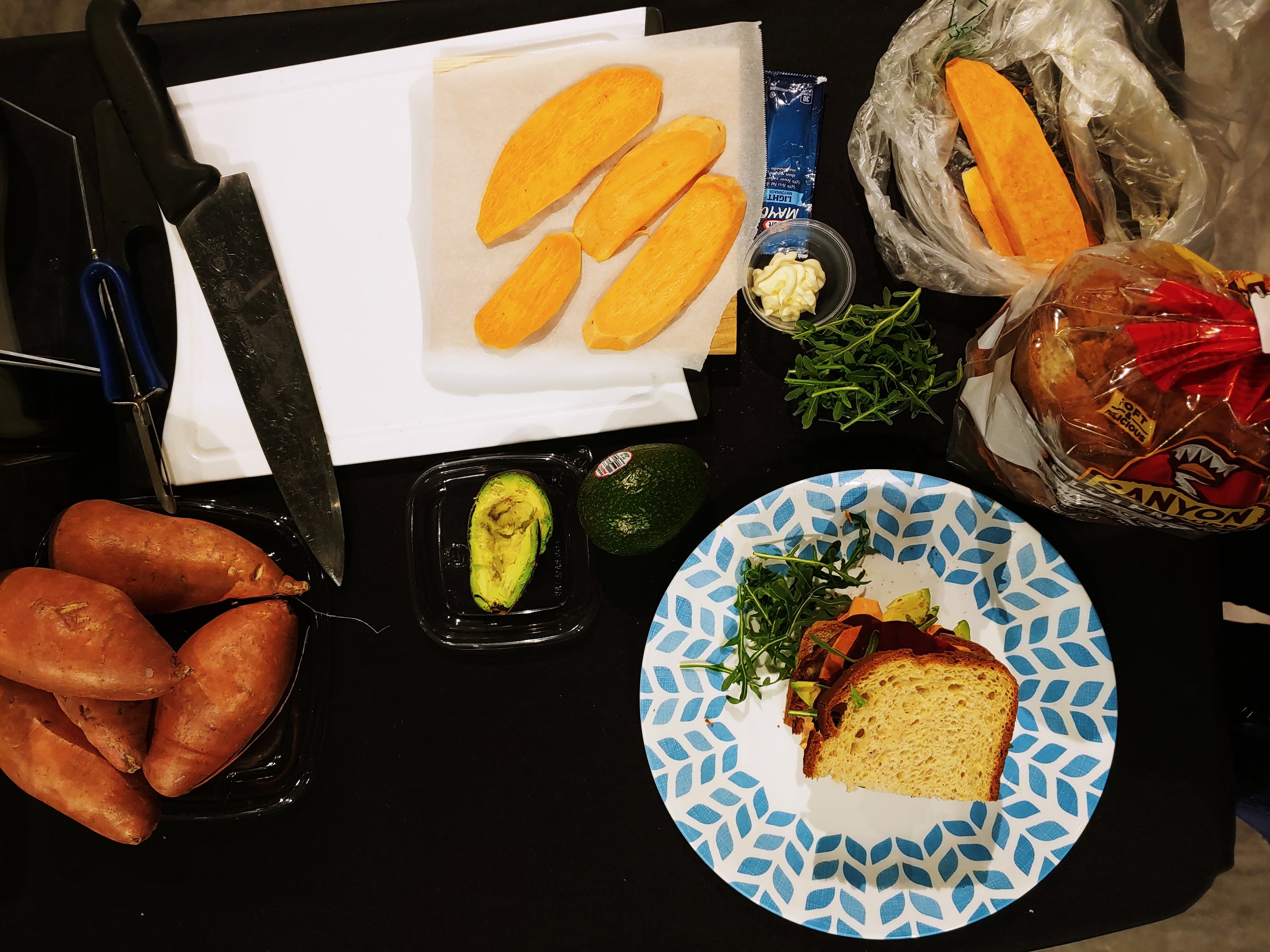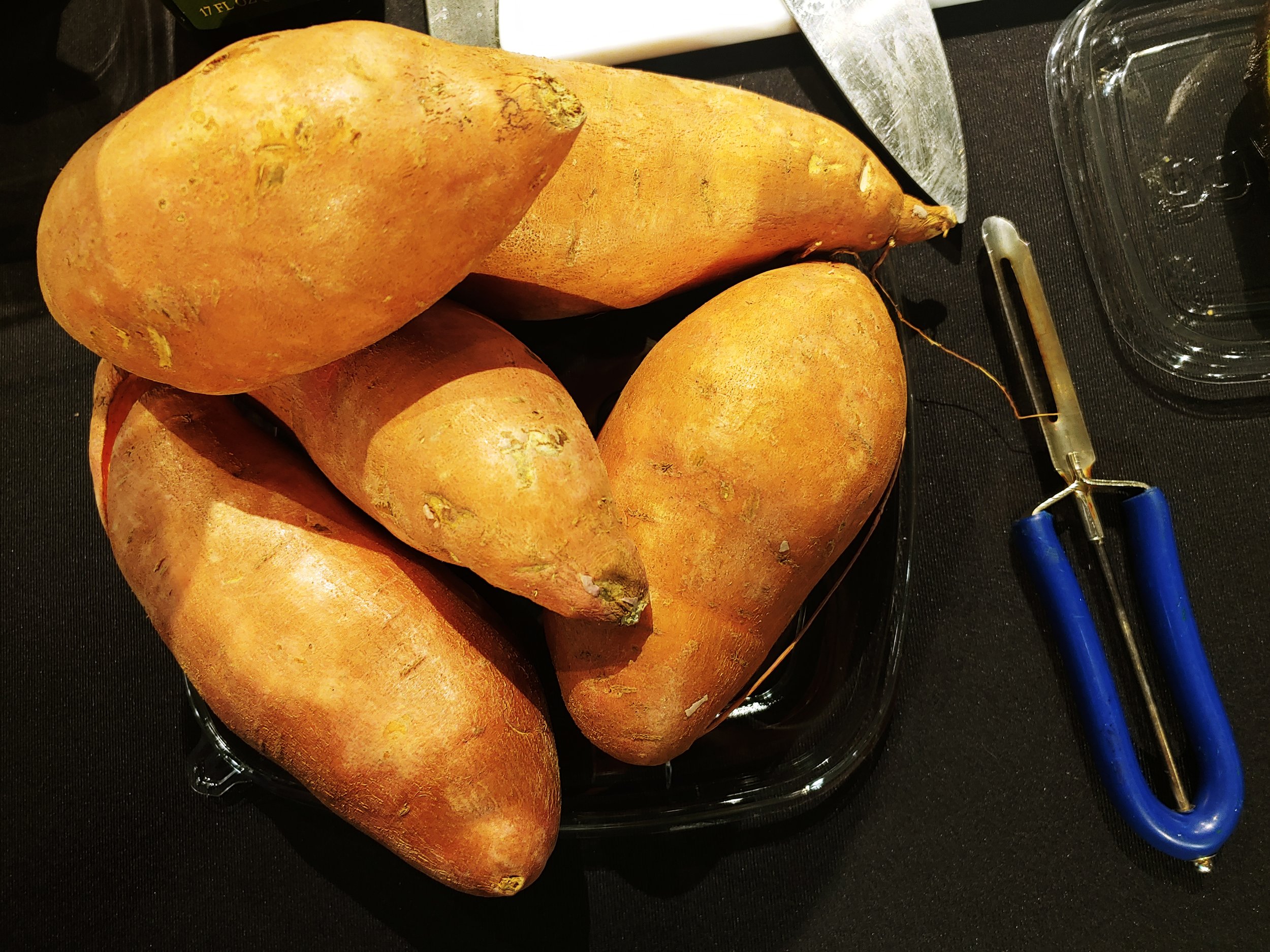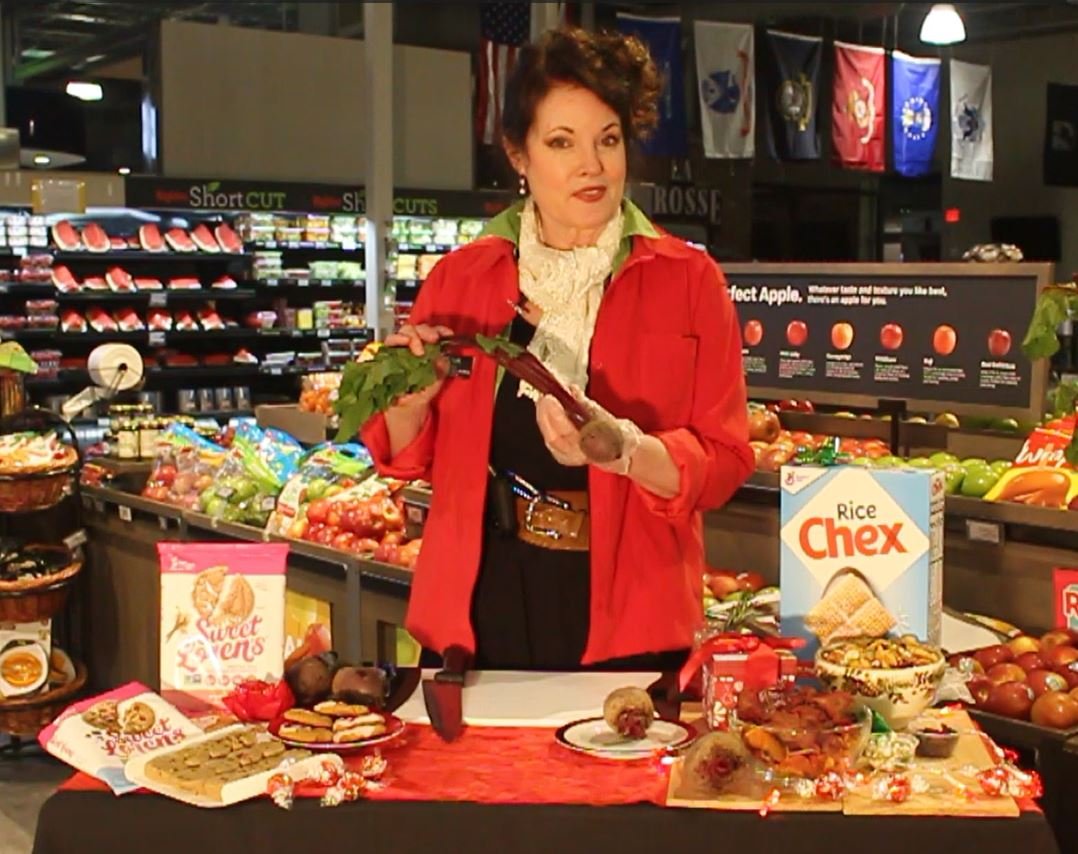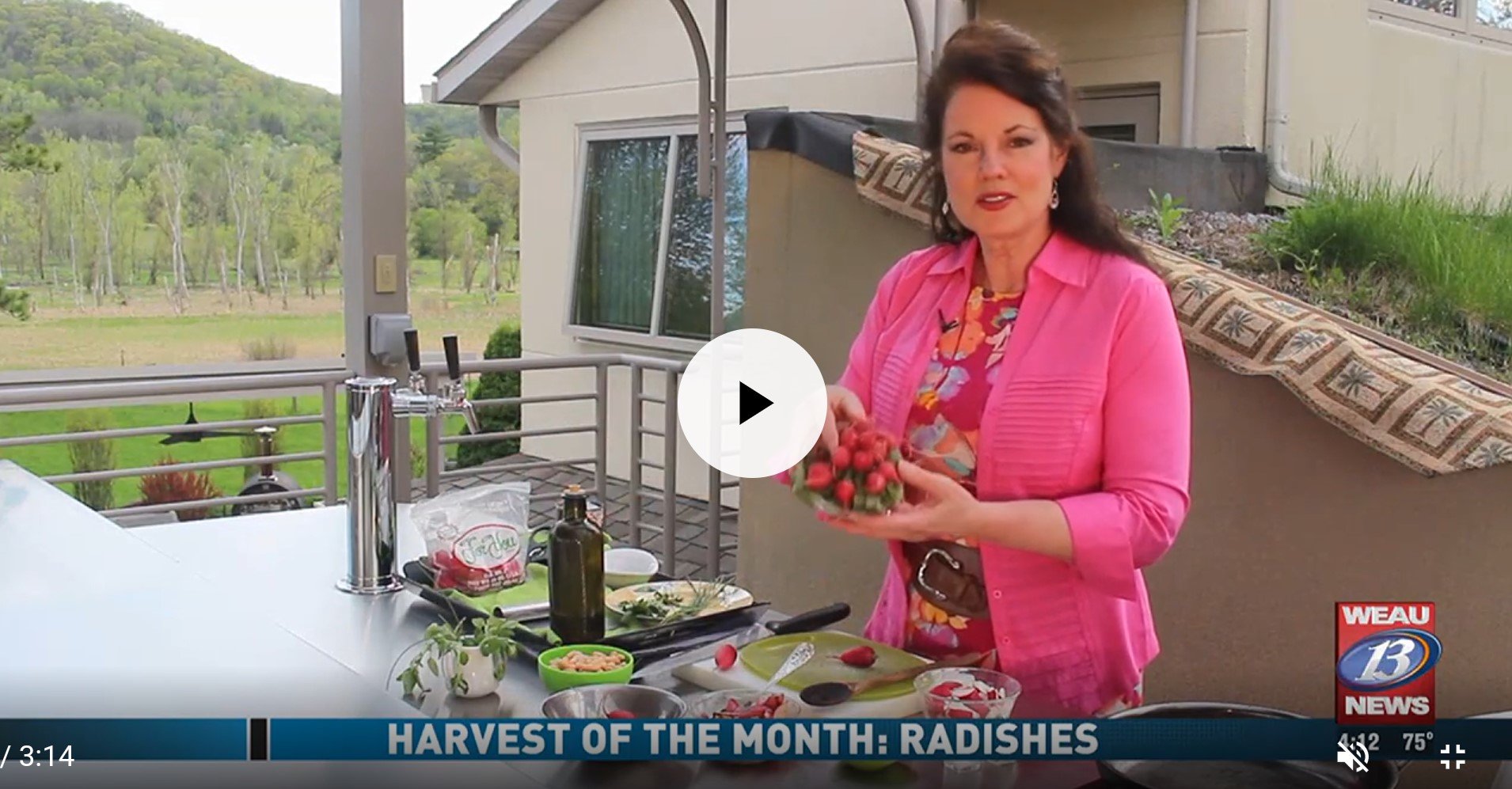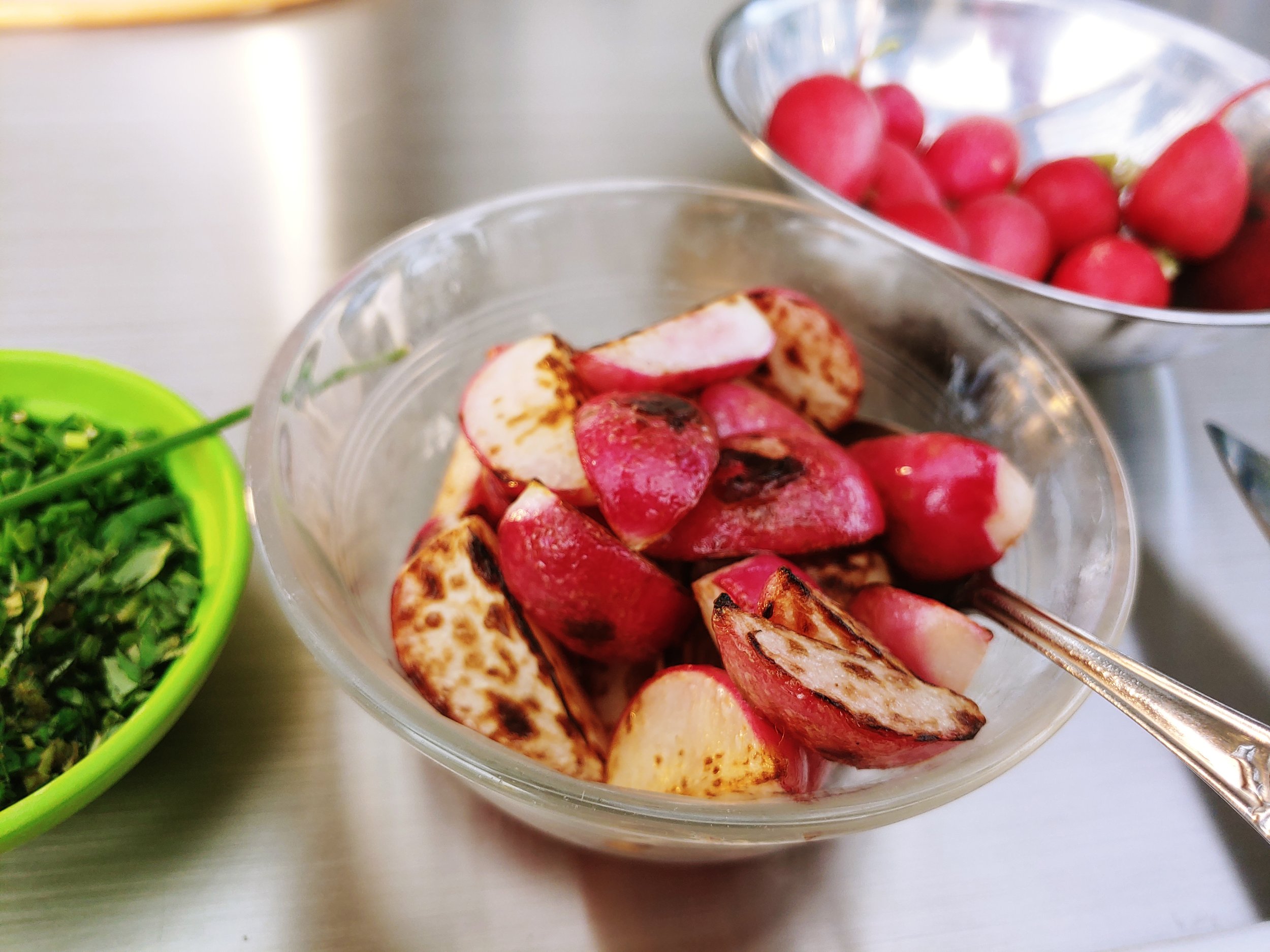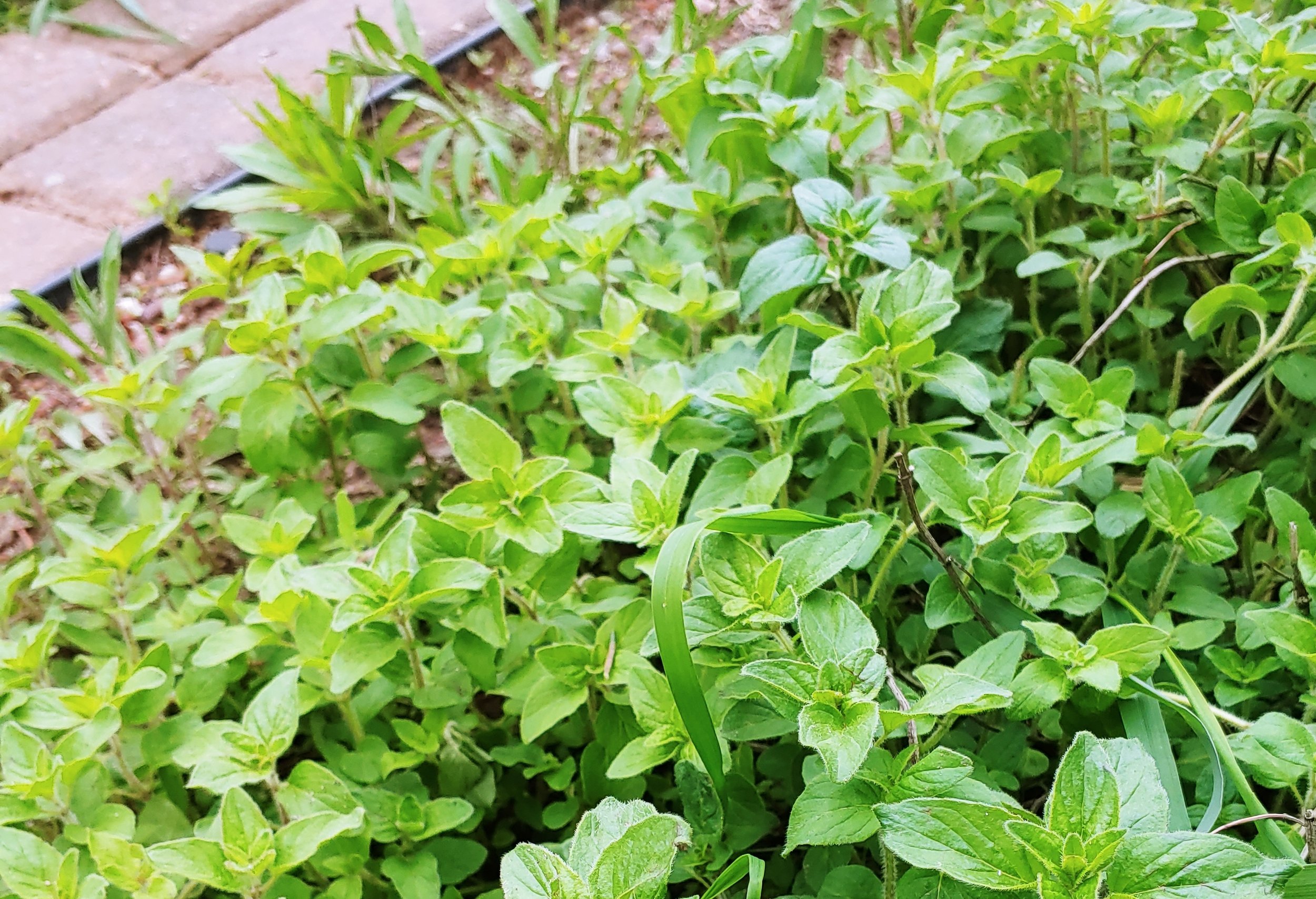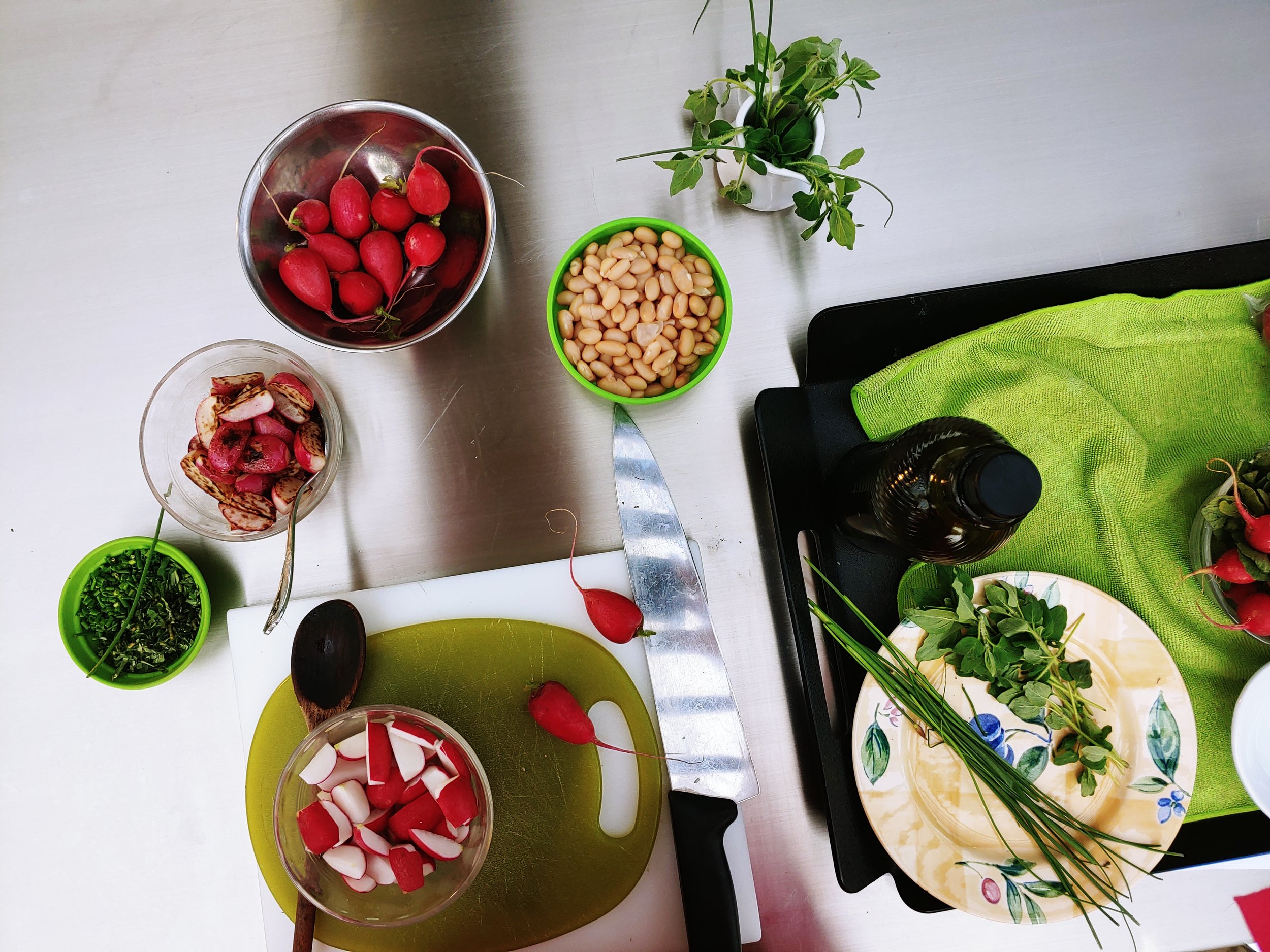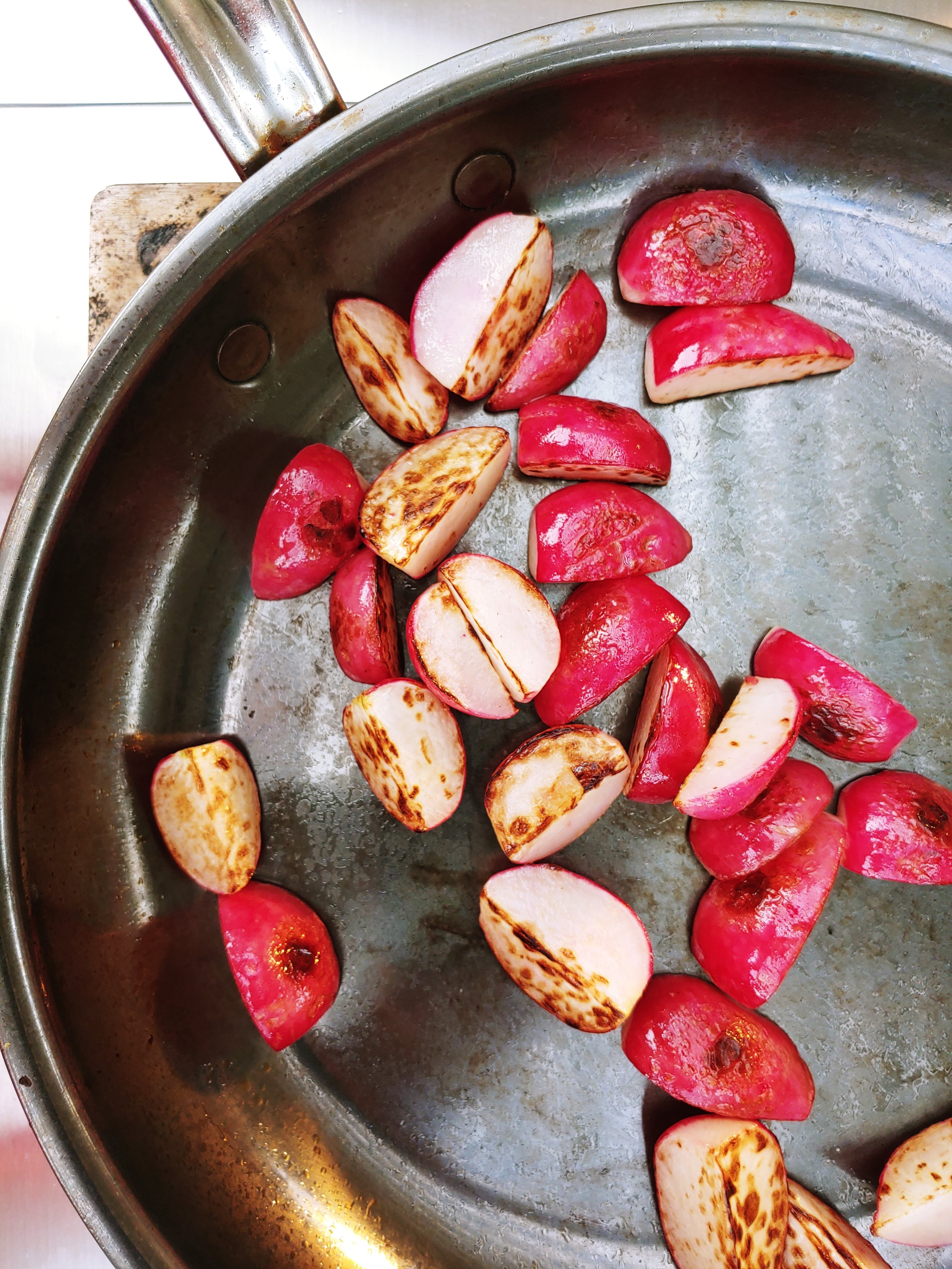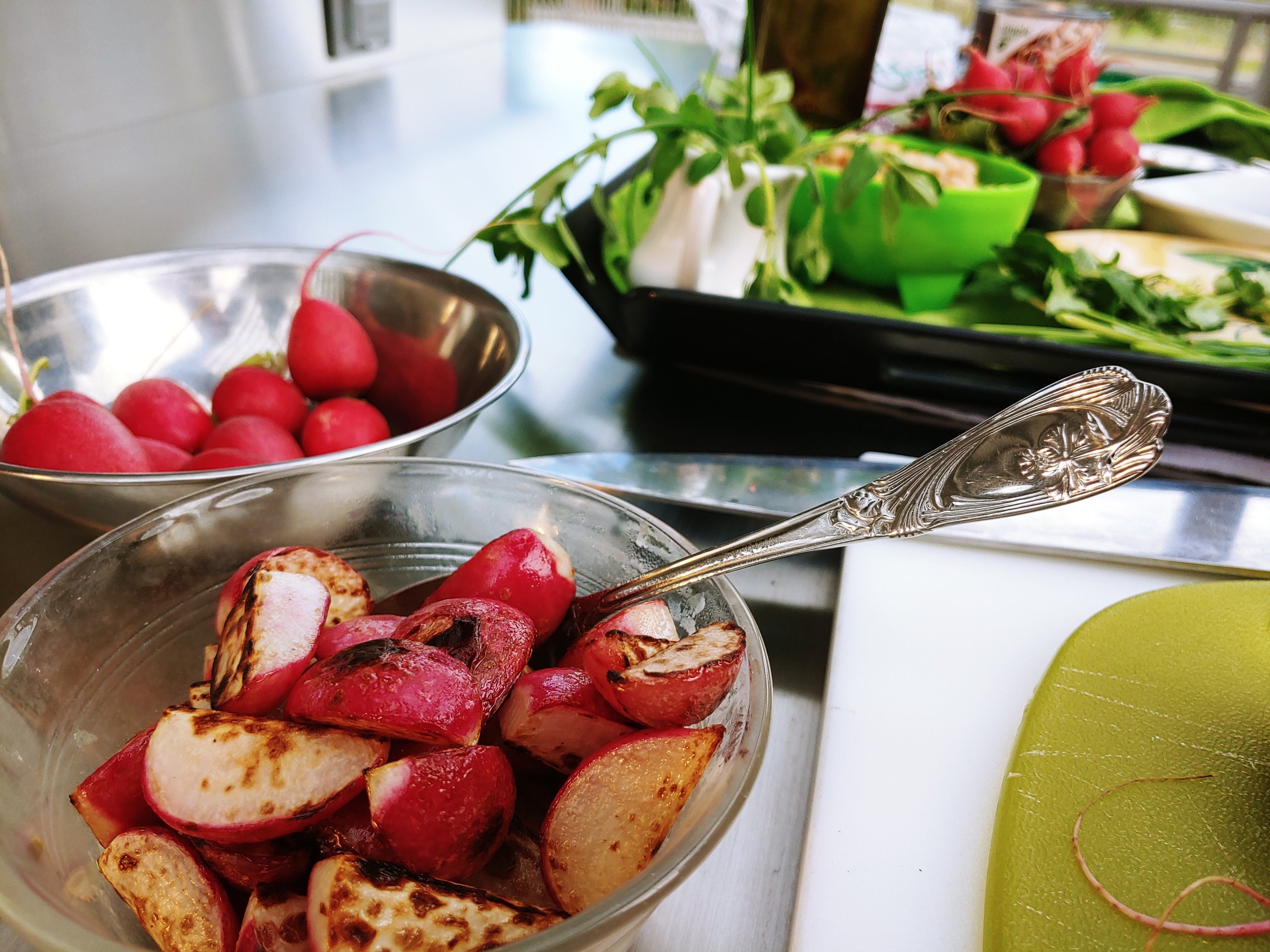By Ruthie Chipps, MS, RDN, CD, LD, Hy-Vee Dietitian (La Crosse, WI & Winona, MN)
Winter Squash is a cozy choice for chilly days.
A good source of fiber, to support digestive health and help with feeling full.
Rich in potassium for healthy blood pressure.
Lower in carbohydrates than pasta or rice, for healthy blood sugar management
Butternut squash is the star of this creamy pasta dish paired with Mulay’s Meatballs (Free of the top nine allergens)
Roast diced butternut squash with olive oil. Graza is a fresh, never blended olive oil that’s harvested and bottled all in the same season. www.Graza.co
Roasted Butternut Squash Pasta Sauce with Meatballs
A seasonal pasta dish that provides added goodness with roasted squash.
Servings: 4
All you need:
3 Tbsp. Graza Olive Oil, divided into three portions (“Sizzle” or “Frizzle” variety)
2 packages Mulay’s Nana’s Italian Meatballs
1 medium butternut squash (about 2 lbs., peeled, seeded, and cubed
1 small onion, chopped
4 garlic cloves, peeled, minced
12 ounces dry or fresh pasta of your choice (fettuccine, rigatoni, or penne)
2 cups Hy-Vee chicken or vegetable broth
½ cup heavy cream (or coconut milk for vegan option)
1/2 teaspoon dried sage (or 2–3 fresh sage leaves)
1/4 teaspoon ground nutmeg
Salt and pepper, to taste
¼ cup grated Hy-Vee Parmesan cheese
Fresh parsley and grated Parmesan, for garnish
Graza olive oil – “Drizzle” variety for finishing
All you do:
Prepare the butternut squash by peeling it with a potato peeler, cubing it into uniform pieces.
Heat the oven to a high temperature of 375 F to caramelize the vegetables.
Spread the squash on a baking sheet, generously coating with Graza olive oil and season with salt and pepper. Roast for approximately 25-30 minutes, allowing them to become tender and develop a rich, golden-brown exterior.
Cook the meatballs according to package directions. Oven: Place thawed meatballs on cooking sheet drizzled with Graza “Frizzle” high heat olive oil and bake in preheated 425° F oven on middle rack for 15-17 minutes. Cook meatballs to 165°F. For Range Top: In large saucepan heat 2 T Graza Frizzle” high heat olive oil and brown meatballs over medium heat, turning often until brown on all sides. Cook to 165°F.
Meanwhile, bring a large pot of salted water to a rolling boil and to cook the pasta until it reaches the perfect al dente texture. Once cooked, drain the pasta, reserving a cup for the sauce.
In a medium/large skillet, sauté the onions in olive oil. Add the garlic and sauté for a few minutes until softened.
Transfer the roasted squash and garlic into the skillet, combining them with vegetable broth, sage, and a hint of nutmeg to create a complex flavor profile.
Transfer all ingredients into the large pasta pot and use an immersion blender to puree the mixture into a silky-smooth sauce, breaking down the vegetables into a creamy consistency. Alternatively, a blender could be used to prepare the sauce. (be careful to place the lid tight on the blender due to hot liquid).
Incorporate heavy cream or coconut milk into the sauce. Sprinkle in Parmesan cheese, stirring to melt.
Add the cooked pasta directly into the sauce, gently tossing to ensure each strand is evenly coated.
Adjust the sauce’s consistency by introducing reserved pasta water, if needed.
Plate the pasta, top with 3-4 meatballs per serving, garnishing with fresh parsley and additional sprinkles of Parmesan cheese. Drizzle with Graza “drizzle” olive oil for the perfect finish. Serve immediately. Enjoy!
For more recipes, visit Hy-Vee and search “Squash” or your favorite ingredient.
To learn more about Hy-Vee dietitian Ruthie Chipps visit here.
Recipe and Photo Credit: Hy-Vee, Inc.
Ruthie Chipps, MS, RDN, CD, LD is a registered dietitian with Hy-Vee, Inc. She hosts “Harvest of the Month” on WEAU-TV (NBC) and is a contributor to JacksonInAction blog.
To learn more about Ruth and the Dietitian Services offered at Hy-Vee La Crosse and Winona click here: Hy-Vee Dietitians Bios
Harvest of the Month is a partnership between Jackson County Department of Health and Human Services, Black River Memorial Hospital, Together for Jackson County Kids, Ho-Chunk Nation, UW Extension-Jackson County, Lunda Community Center, Boys and Girls Club, Hansen’s IGA, local school districts, Hy-Vee La Crosse, Hy-Vee Winona, MN, School District of Winona, The BRF Library and the community. TV segments are hosted by Ruth Chipps, RDN, and air on NBC-TV (WEAU) in Eau Claire, WI. Jackson County partners with La Crosse County for Harvest of the Month.
Disclosures: This post was made possible with a promotional sponsorship between Hy-Vee, Graza Olive Oil and Mulay’s Sausage.
